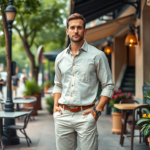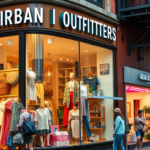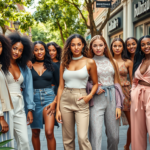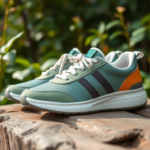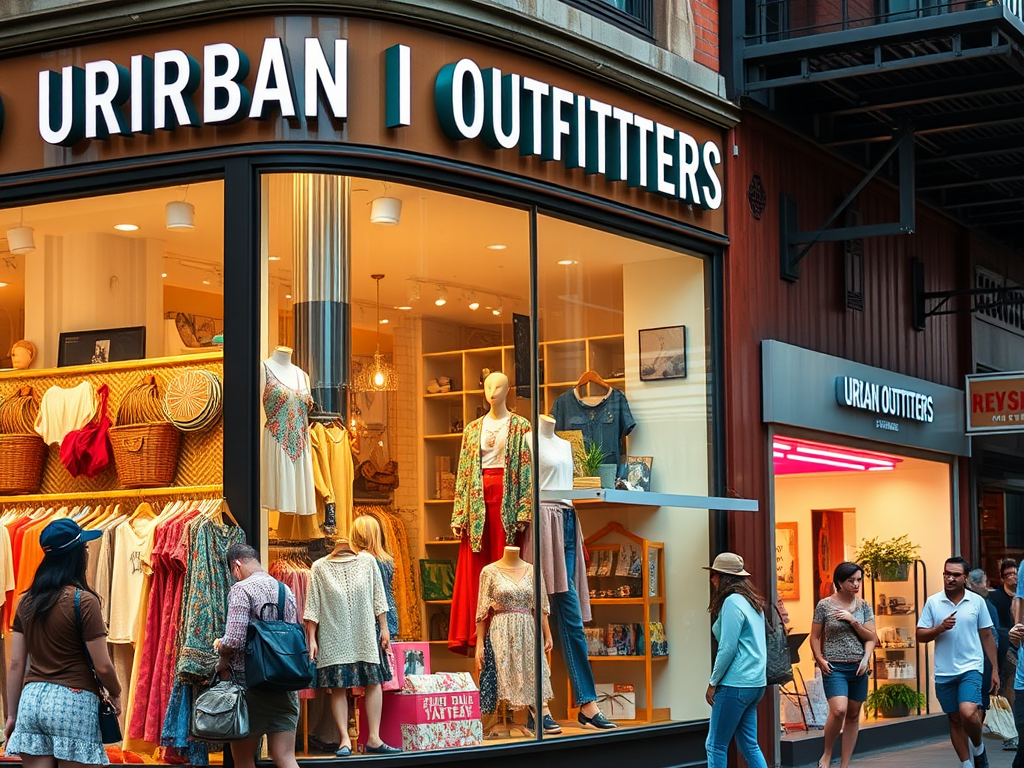
Urban Outfitters stands as a vibrant symbol of youth culture and creative expression in contemporary retail. With its eclectic blend of fashion, home décor, and lifestyle products, this brand has successfully carved a niche that resonates with a diverse demographic. As a lifestyle retailer, Urban Outfitters not only sells items but also curates experiences that feel authentically connected to the lives and values of its consumers. To grasp the brand’s significance in the retail landscape, it’s essential to explore its history, evolution, and underlying mission. In this detailed dive, we will examine how Urban Outfitters has navigated the changing tides of fashion and societal expectations, ultimately emerging as a leader in ethical retailing. Let’s embark on an exploration of how this influential brand continues to inspire and engage a generation.
The Origins of Urban Outfitters
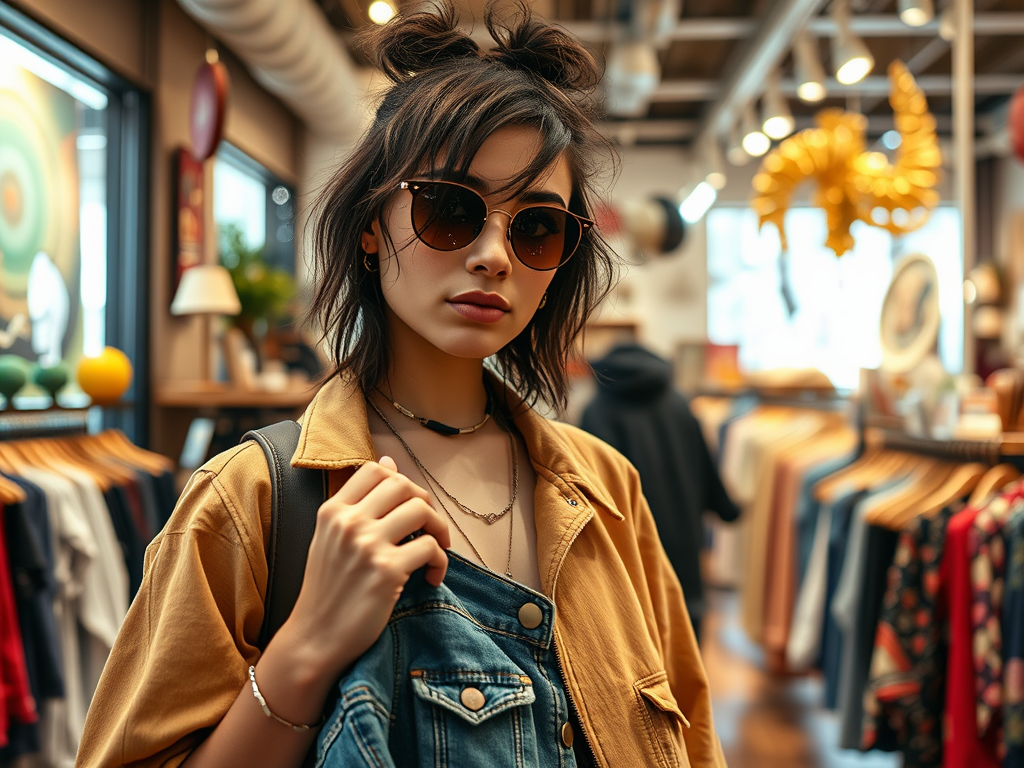
Founded in 1970 by Scott Belair, Urban Outfitters was initially a humble college store established in Philadelphia. It began as an outlet that catered specifically to students looking for unique clothing options that stood apart from mainstream fashion. The early vision of Urban Outfitters sought to attract an audience drawn to the counterculture movements of the time, creating a distinct identity within the retail space. Vintage clothing was a significant part of their offering, appealing to young individuals who were seeking not just fashion but a lifestyle. The allure of this vintage aesthetic fostered a strong community spirit among its patrons. This was just the beginning of a journey that would see Urban Outfitters evolve dramatically over the decades.
When Urban Outfitters first opened its doors, its product lineup was heavily influenced by the cultural landscape of the 1970s. Items included retro clothing, eclectic accessories, and a mix of home goods that spoke to the bohemian lifestyle of young adults. This distinctive approach cultivated a loyal customer base who felt represented by the brand’s carefully curated selections. The store quickly became more than just a place to shop; it turned into a cultural hub for youth expressing their individuality. As a result, Urban Outfitters established a foundation that would pave the way for future innovations while retaining its commitment to authenticity and creativity. Over time, the brand transitioned from a single location to a nationwide presence, all the while keeping its core principles intact.
Evolution Through the Decades

As the years progressed, Urban Outfitters showcased remarkable adaptability, transforming in response to both fashion trends and the evolving shopping behaviors of consumers. Each decade presented unique challenges, yet the brand consistently found ways to resonate with its audience. From music festivals to lifestyle trends, Urban Outfitters maintained its reputation for understanding and embodying the spirit of contemporary youth. By integrating new product offerings and staying attuned to cultural shifts, the brand ensured its relevance in the fast-paced world of retail.
The 80s and 90s: Growth and Expansion
The 1980s and 1990s marked significant periods of growth for Urban Outfitters. The brand expanded its footprint by opening new locations across the United States, thriving in urban centers where young adults congregated. During this time, the concept of lifestyle retailing gained traction, and Urban Outfitters embraced this trend fully by diversifying its product offerings. The introduction of home goods, stylish accessories, and music albums attracted an increasingly broader customer base. This strategic diversification helped solidify Urban Outfitters’ position as a go-to destination for both fashion and lifestyle needs. By the late 1990s, the brand’s identity was unmistakably aligned with the values of a new generation, capturing the essence of individuality and creativity.
The 2000s: Embracing Digital and Cultural Shifts
With the rise of the internet, Urban Outfitters adeptly transitioned into the digital era. The 2000s brought a seismic shift in retail, and the brand capitalized on e-commerce to connect with consumers who were becoming increasingly tech-savvy. By investing in digital marketing strategies and social media platforms, Urban Outfitters engaged effectively with its target audience, fostering community online as well as in-store. This approach not only enhanced customer relationships but also established the brand as a leader in the retail landscape. The seamless integration of online and offline shopping experiences allowed Urban Outfitters to cater to a bustling demographic that embraced convenience while hunting for authenticity. Through captivating content and targeted advertising campaigns, the brand reinforced its identity as a lifestyle retailer.
The Brand’s Mission Statement
At the heart of Urban Outfitters lies its mission statement, a reflection of the brand’s core values and aspirations. Emphasizing creativity, individuality, and sustainability, the mission reiterates Urban Outfitters’ commitment to inspiring the next generation. The company strives to innovate not just in product selection but also in its approach to ethical retailing. Their mission can be summarized in the following key areas:
- Creativity: Foster an environment where artistic expression thrives.
- Individuality: Celebrate diverse identities and unique lifestyles.
- Sustainability: Commit to environmentally responsible practices in sourcing and production.
By aligning its offerings with consumer values, Urban Outfitters has successfully built a brand that appeals to conscious shoppers. The brand’s initiatives often highlight sustainability, such as the use of recycled materials in their products and the promotion of eco-friendly alternatives. These efforts not only reflect the changing mindset of contemporary consumers but also reinforce Urban Outfitters’ commitment to social responsibility in fashion.
The Urban Outfitters Experience
Walking into an Urban Outfitters store is like stepping into a curated world, where every detail is designed to enhance the shopping experience. Store layouts are evolving, often incorporating local art and innovative displays that invite customers to explore. Each location offers a distinct vibe, with an emphasis on creating an atmosphere that feels both welcoming and dynamic. This thoughtful approach contributes to a sense of community, making shoppers want to return not just for the products but for the experience itself.
| Key Aspects of the Urban Outfitters Experience | Details |
|---|---|
| Store Design | Eclectic decor that features local artists and vintage finds. |
| Customer Service | Friendly staff trained to provide personalized recommendations. |
| Community Engagement | Host local events and workshops to foster community connections. |
Urban Outfitters also plays an active role in community engagement. By organizing events that resonate with local audiences—like art shows and live music performances—the brand strengthens its bond with customers. This emphasis on community not only enriches the shopping experience but also aligns with Urban Outfitters’ mission of fostering connections and celebrating individuality.
Conclusion
In summary, understanding Urban Outfitters involves more than just recognizing its history; it requires an appreciation for the brand’s mission and its ongoing evolution. From its humble beginnings to its current position as a lifestyle leader, Urban Outfitters has navigated the complexities of the retail landscape masterfully. By staying true to its core values of creativity and individuality, the brand has cultivated a loyal community that appreciates its unique offerings. In a world that often leans towards conformity, Urban Outfitters stands out as a beacon of authenticity, inspiring individuals to express themselves.
Frequently Asked Questions
- What year was Urban Outfitters founded? Urban Outfitters was founded in 1970, starting with a singular store in Philadelphia.
- What kind of products does Urban Outfitters offer? The brand offers an array of products, including clothing, lifestyle accessories, home goods, and wellness items.
- How does Urban Outfitters support sustainability? The brand implements sustainability initiatives, such as using recycled materials and emphasizing ethically-sourced products.
- Can I find Urban Outfitters online? Yes, Urban Outfitters operates a comprehensive e-commerce platform where consumers can shop for their favorite items.
- What is the brand’s target demographic? Urban Outfitters primarily caters to young adults and college students seeking unique and trendy fashion choices.
